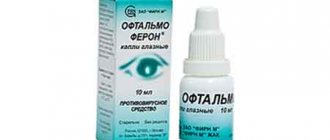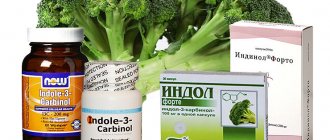Aflazin is a vitamin product of plant origin. The active ingredient of the drug is dry hibiscus extract. The product is available in the form of capsules, each of which contains 200 mg of the active ingredient.
Aflazin, containing a patented hibiscus extract UTIrose, has anti-inflammatory, bacteriostatic, anti-adhesive and anti-edematous properties and is used for the treatment and prevention of urinary tract diseases of infectious origin. The drug is also used as part of complex therapy for such diseases.
Pharmacodynamics
The patented hibiscus extract, which determines the pharmacological properties of the drug, is a source of organic acids (citric, hydroxysuccinic, pyrocatechol, hibiscus), vitamins, polysaccharides, bioflavonoids, which determine the bacteriostatic effect of the drug Aflazin against most pathogens of urinary tract infections (Staphylococcus spp., Streptococcus spp. , Enterococcus faecalis, Escherichia coli, Enterobacter spp., Candida spp., etc.).
It has an anti-inflammatory, anti-edematous effect, exhibits an anti-adhesive effect, which makes the adhesion (sticking) of microorganisms to the walls of the urinary tract, their development and reproduction impossible. Prevents the development of dysuric phenomena.
Pharmacological action of Aflazin
According to the instructions for Aflazin, the active substance contains organic acids: hydroxysuccinic (malic), citric, pyrocatechol and hibiscus, bioflavonoids, vitamins and polysaccharides. These components allow the vitamin product to exhibit a bacteriostatic effect against many pathogens of urinary tract infections.
Aflazin has anti-edematous, anti-adhesive and anti-inflammatory effects. Also, the use of this drug helps prevent dysuric disorders, such as frequent and false urge to urinate, discomfort during this process, pain and burning.
The active substance of the drug has a detrimental effect on the following pathogens of infectious diseases: Enterobacter spp., Staphylococcus spp., Candida spp., Enterococcus faecalis, Streptococcus spp., Escherichia coli and some others.
Indications Aflazin
Aflazin is used in the complex treatment of patients suffering from infectious diseases of the urinary tract (including acute and chronic forms of diseases), including cystitis and pyelonephritis. Aflazin can be prescribed to patients with asymptomatic bacteriuria.
The drug Aflazin is used for kidney diseases of non-infectious etiology, including interstitial nephritis and glomerulonephritis.
Aflazin can be recommended for the prevention of urinary tract infections during instrumental studies in urological and gynecological practice.
Aflazin capsules are used to prevent the formation of urinary stones in patients at high risk (including patients who have undergone removal of urinary stones).
Side effects of Aflazin
When using this product for therapeutic and prophylactic purposes, only allergic reactions may occur due to individual intolerance to the active substance.
To date, there are no reviews of Aflazin that would indicate poisoning due to an overdose of the drug. The vitamin remedy can be taken together with antibiotics and other antimicrobial drugs. Aflazin is also allowed to be taken with other medications.
This drug does not affect the ability to drive vehicles or operate complex devices and mechanisms.
Instructions for use and dosage
Aflazin should be taken orally. Aflazin capsules are swallowed whole with a sufficient amount of water. The drug can be taken regardless of meals. The duration of treatment and the regimen for taking Aflazin are determined by the doctor.
Adult patients and adolescents are usually recommended to take 1 capsule of Aflazin twice a day. Children over 6 years of age are usually recommended to take 1 Aflazin capsule per day.
The average course of treatment is from 4 to 6 weeks for acute conditions (including episodes of exacerbation of chronic diseases). The duration of the preventive course of treatment is from 2 to 4 weeks.
Aflazin
Name: Aflazin Pharmacological action: Aflazin is a medicinal product containing hibiscus extract. The drug contains biologically active substances (including organic acids, polysaccharides, vitamins and bioflavonoids) that have a bacteriostatic effect, and also have anti-edematous and anti-inflammatory effects. Aflazin reduces the adhesion of bacteria to the mucous membrane of the urinary tract, reducing the risk of infection, and also prevents dysuric phenomena. Aflazin is active against most strains that cause urinary tract infections, including strains of Staphylococcus spp., Enterococcus faecalis, Streptococcus spp., Escherichia coli, Candida spp. and Enterobacter spp.
The pharmacokinetics of the drug Aflazin is not presented.
Indications for use: Aflazin is used in the complex treatment of patients suffering from infectious diseases of the urinary tract (including acute and chronic forms of diseases), including cystitis and pyelonephritis. Aflazin can be prescribed to patients with asymptomatic bacteriuria. The drug Aflazin is used for kidney diseases of non-infectious etiology, including interstitial nephritis and glomerulonephritis. Aflazin can be recommended for the prevention of urinary tract infections during instrumental studies in urological and gynecological practice. Aflazin capsules are used to prevent the formation of urinary stones in patients at high risk (including patients who have undergone removal of urinary stones).
Directions for use: Aflazin should be taken orally. Aflazin capsules are swallowed whole with a sufficient amount of water. The drug can be taken regardless of meals. The duration of treatment and the regimen for taking Aflazin are determined by the doctor. Adult patients and adolescents are usually recommended to take 1 capsule of Aflazin twice a day. Children over 6 years of age are usually recommended to take 1 Aflazin capsule per day. The average course of treatment is from 4 to 6 weeks for acute conditions (including episodes of exacerbation of chronic diseases). The duration of the preventive course of treatment is from 2 to 4 weeks.
Side effects: Aflazin did not cause side effects during studies. In patients with hypersensitivity, the possibility of developing allergic reactions cannot be excluded. If side effects develop, you should report them to your doctor.
Contraindications: Aflazin is not used in patients with hypersensitivity to the active or auxiliary components of the capsules (including Aflazin is not prescribed to patients with a rare form of lactose intolerance). In pediatric practice, the drug Aflazin is used only for the treatment of children over 6 years of age.
Pregnancy: In the first trimester of pregnancy, Aflazin can only be used under the strict supervision of a physician. In the second and third trimester of pregnancy, the use of the drug Aflazin is allowed without additional precautions. The period of breastfeeding is not a contraindication for the use of the drug Aflazin.
Interaction with other drugs: Aflazin can be used in combination with antibiotics. There are no clinically significant pharmacological interactions of Aflazin with other drugs.
Overdose: There are no cases of overdose of Aflazin. When taking excessive doses of the drug Aflazin and developing symptoms of overdose, appropriate therapy is carried out aimed at eliminating signs of intoxication.
Release form: Aflazin capsules, 10 pieces in blister packs, 30 capsules (3x10) in a cardboard pack.
Storage conditions: Aflazin should be stored out of the reach of children, where the temperature is maintained at 15 to 25 degrees Celsius. The shelf life of the drug Aflazin is 2 years after release.
Composition: 1 capsule of Aflazin contains: Dry hibiscus extract – 200 mg; Additional components including lactose monohydrate.
Attention! The description of the drug " Aflazin " on this page is a simplified and expanded version of the official instructions for use. Before purchasing or using the drug, you should consult your doctor and read the instructions approved by the manufacturer. Information about the drug is provided for informational purposes only and should not be used as a guide to self-medication. Only a doctor can decide to prescribe the drug, as well as determine the dose and methods of its use.
Method of congestion and dosage
Adults and children over 12 years of age take 1 capsule 2 times daily, regardless of intake. Children aged 6 to 12 years – 1 capsule 1 time per day. The severity of illness is determined by the doctor individually depending on the severity of illness. It is recommended that the duration of stagnation in case of acute inflammation of the sinus and acute chronic illness should be 4–6 days. It is recommended that the course of stagnation with a preventive method be 2–4 days.
Children.
The drug can be administered to children aged 6 years or older.
Lazine®5.0 (Lazine®5.0)
The pharmacokinetic parameters of levocetirizine change linearly.
Suction
After oral administration, the drug is quickly and completely absorbed from the gastrointestinal tract. Eating does not affect the completeness of absorption, although it reduces its speed. The maximum concentration (Cmax) in blood plasma is reached after 0.9 hours and is 270 ng/ml, the equilibrium concentration is reached after 2 days.
Distribution
Levocetirizine is 90% bound to plasma proteins. The volume of distribution (Vd) is 0.4 l/kg. Bioavailability reaches 100%.
Metabolism
In small quantities (<14%) it is metabolized in the body by N- and O-dealkylation (unlike other H1-histamine receptor antagonists, which are metabolized in the liver using the cytochrome system) to form a pharmacologically inactive metabolite. Due to negligible metabolism and lack of metabolic potential, interaction of levocetirizine with other drugs is unlikely.
Removal
The half-life (T1/2) in adults is 7.9 ± 1.9 hours. In young children, the half-life is shorter. In adults, the total clearance is 0.63 ml/min/kg. About 85.4% of the administered dose of the drug is excreted unchanged by the kidneys through glomerular filtration and tubular secretion; about 12.9% - through the intestines.
Selected patient groups
Patients with kidney failure
In patients with renal failure (creatinine clearance (CC) < 40 ml/min), drug clearance is reduced. In hemodialysis patients, total clearance is reduced by 80. Less than 10% of the drug is removed during a standard 4-hour hemodialysis procedure.
Patients with liver failure
Pharmacokinetics in patients with hepatic impairment have not been studied. In patients with chronic liver diseases (hepatocellular, cholestatic and biliary cirrhosis). Those receiving the racemic compound cetirizine at a dose of 10 or 20 mg as a single dose experienced a 50% increase in half-life and a 40% decrease in drug clearance compared to healthy subjects.
Children
Data from a study of the pharmacokinetics of the drug in 14 children aged 6 to 11 years weighing from 20 to 40 kg with a single oral dose of 5 mg of levocetirizine showed that Cmax and area under the curve (AUC) were approximately twice as high as in healthy adults with cross-control. The mean Cmax was 450 ng/ml, the maximum concentration was reached after an average of 1.2 hours, the total body weight-adjusted clearance was 30% higher, and the half-life was 24% shorter in children than in adults. Specific pharmacokinetic studies have not been conducted in children under 6 years of age. A retrospective pharmacokinetic analysis was conducted in 323 patients (181 children aged 1 to 5 years, 18 children aged 6 to 11 years, and 124 adults aged 18 to 55 years) who received one or more doses of levocetirizine 1.25 mg. up to 30 mg. Data obtained during the analysis showed that taking the drug at a dose of 1.25 mg in children aged 6 months to 5 years leads to plasma concentrations similar to those in adults when taking 5 mg of the drug once a day.
Elderly patients
Pharmacokinetic data in elderly patients is limited. When repeated dosing of levocetirizine 30 mg once daily for 6 days in 9 elderly patients (ages 65 to 74 years) total clearance was approximately 33% lower than that in younger adults. The distribution of cetirizine racemate has been shown to be more dependent on renal function than on age. This statement can also be applied to levocetirizine, since both levocetirizine and cetirizine are excreted primarily in the urine. Therefore, in elderly patients, the dose of levocetirizine should be adjusted depending on renal function.
Proteflazid
Proteflazid is an antiviral herbal medicine based on flavonoid glycosides. Used for herpetic infections of the skin and mucous membranes, incl. genitals. For Russia, as well as for all countries of the former USSR, the problem of treating viral infections is steadily gaining relevance. A person’s natural resistance to viral infections is increasingly influenced by factors such as chronic psycho-emotional stress, deteriorating environmental conditions, and dietary errors. The result is a progressive deterioration of the immune system, which has fewer and fewer reserves to fight viral agents, incl. herpes simplex virus. The latter infected 9 out of 10 inhabitants of the earth. The drug Proteflazid based on flavonoid glycosides extracted from wild cereal plants is effective against infection with the herpes virus, because suppresses the activity of viral DNA polymerase and activates mononuclear phagocytes, which “devour” the virus. Proteflazid exhibits a direct antiviral effect at all stages of disease development. It also has an immunotropic effect, acts as a detoxicant and antioxidant (suppresses free radical oxidation processes). The drug has a favorable safety profile: it can be used in children, pregnant and lactating women (in consultation with a doctor after assessing the benefit/risk ratio).
It is well tolerated by patients and does not cause any unwanted side effects. In patients infected with HIV, the use of Proteflazide can improve appetite, restore body weight, eliminate asthenic phenomena, and increase immunity. The drug also has a general strengthening effect, acting as an adaptogen. Absorption of the drug into the bloodstream occurs mainly in the small intestine and to a small extent in the stomach. A small part of flavonoid glycosides undergoes a first-pass effect through the liver, but the bulk of the active components are distributed in the tissues and enter the affected cells. The half-life of the drug is on average 7 hours. The frequency of use of Proteflazide is 3 times a day. The drug is contraindicated in persons with individual intolerance to the active substances, ulcerative and erosive lesions of the gastric and duodenal mucosa. The duration of the medication course is 1 month. After a month, according to indications, a second course is possible. Drops can be used both internally and externally using tampons or gauze pads soaked in Proteflazid drops (for example, for genital herpes). For external use, the duration of treatment is 2 weeks. The drug does not interact with other drugs.
Showing
We offer complex therapy for acute and chronic infections of honeycomb (cystitis) and nephritis (pyelonephritis), with asymptomatic bacteriuria, including in pregnant women.
Chronic non-infectious diseases (glomerulonephritis, interstitial nephritis), prevention of infections of the thyroid glands, including after instrumental procedures (endoscopic, radiological and gynecological investigations).
Prevention of the formation of sechovy stones, including after their removal.
Features of good stagnation
Some medications may contain lactose, which should not affect patients with rare spasmodic forms of galactose intolerance, lactase deficiency or glucose-galactose malabsorption syndrome.
Suspension during pregnancy or breastfeeding.
Administration of the drug in the first trimester of pregnancy is possible only as prescribed by the doctor. Administration of the drug during pregnancy starting from the second trimester, as well as during breastfeeding, does not require additional consultation with a doctor.
This is due to the fluidity of the reaction during treatment with vehicles or other mechanisms.
Doesn't flow in.









